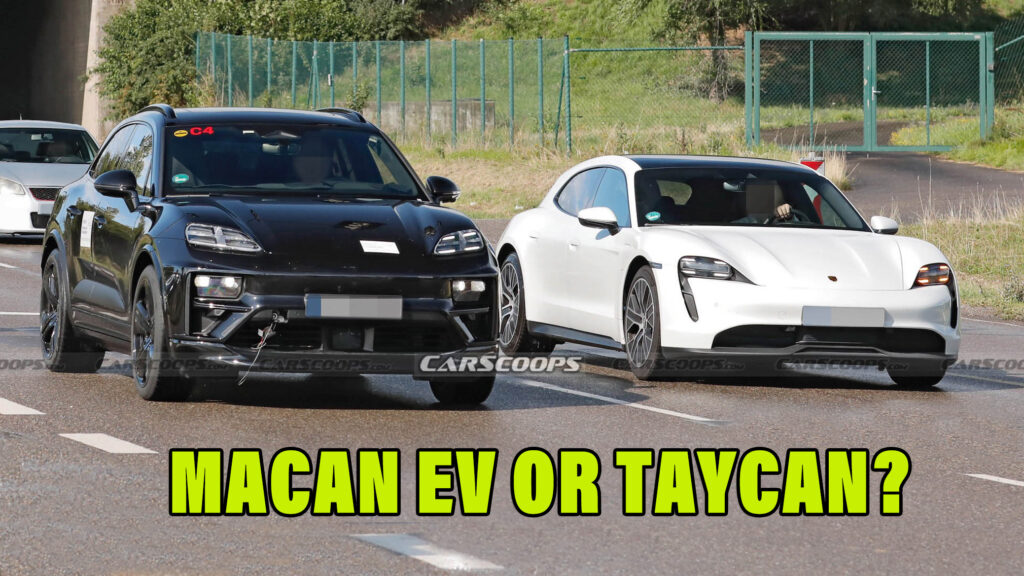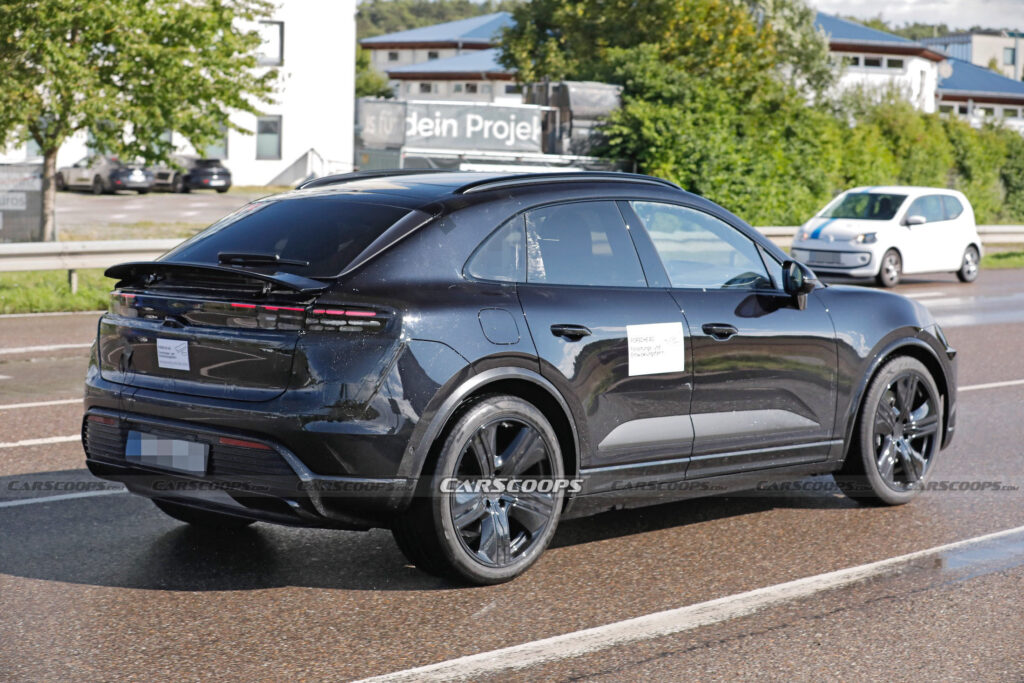Taycan starts at $90k but Macan is expected to cost from $80k, though Audi Q6 e-tron cousin will be even more affordable
August 28, 2023 at 08:31
 –>
–> 
–>
We’re now so close to the official reveal of the Macan EV, Porsche’s first ever electric SUV, that the firm’s final prototypes have ditched almost every last shred of disguise. Before the 2024 model year is over Porsche dealers will be delivering the new EVs, and some Porsche fans might well have opted to buy one over the company’s sole current EV, the Taycan.
Sure, an electric Cayenne would be a better match for the Taycan in terms of size, and Porsche has confirmed it’s working on one. The snag is, it won’t be on sale until 2026. But since the regular combustion-powered Macan consistently outsells the ICE Cayenne, getting the little guy to the street first probably suits Porsche customers just fine.
Intel suggests the Macan EV will start at around $80,000, compared with $90,000 for the entry level Taycan sedan and $102,000 for the crossover-style Taycan Cross Turismo in its most affordable form. But that $80k won’t net you you the 603 hp (450 kW / 612 PS) and 737+ lb-ft (1,000+ Nm) of torque that Porsche says is possible from the PPE electric platform. Those kinds of numbers will probably require a six-figure spend, leaving the entry-level Macan EV with a far more modest power output. And if $80k sounds too steep, you might want to check out Audi’s new Q6 e-tron, which is built around the same PPE platform, but will be slightly more affordable.
advertisement scroll to continue
Related: 2026 Porsche Cayenne EV Spied For The First Time

Our spy photographers have caught the Macan before wearing hardly any disguise, but bad weather meant the images weren’t as clear as these pics taken in crisp sunlight. There’s still some tape around the LED lights at both ends, but we can see all the detail in the bumpers below, including the recessed headlights and large, centrally mounted front sensor that delivers data to the driver assistance systems.
Despite the Macan EV being built around an entirely different platform to the current ICE model, Porsche understands that not everyone is ready to make the switch to electric power yet and plans to continue selling the older model alongside the new one, at least initially. The automaker hasn’t announced how long the pair will co-exist, but it may be longer than Porsche originally planned because of concerns over the quality of EV infrastructure in the U.S. The firm has reportedly told dealers it will monitor sales volumes over the next two years before making a firm decision.

 <!–
<!– –>
–> 
